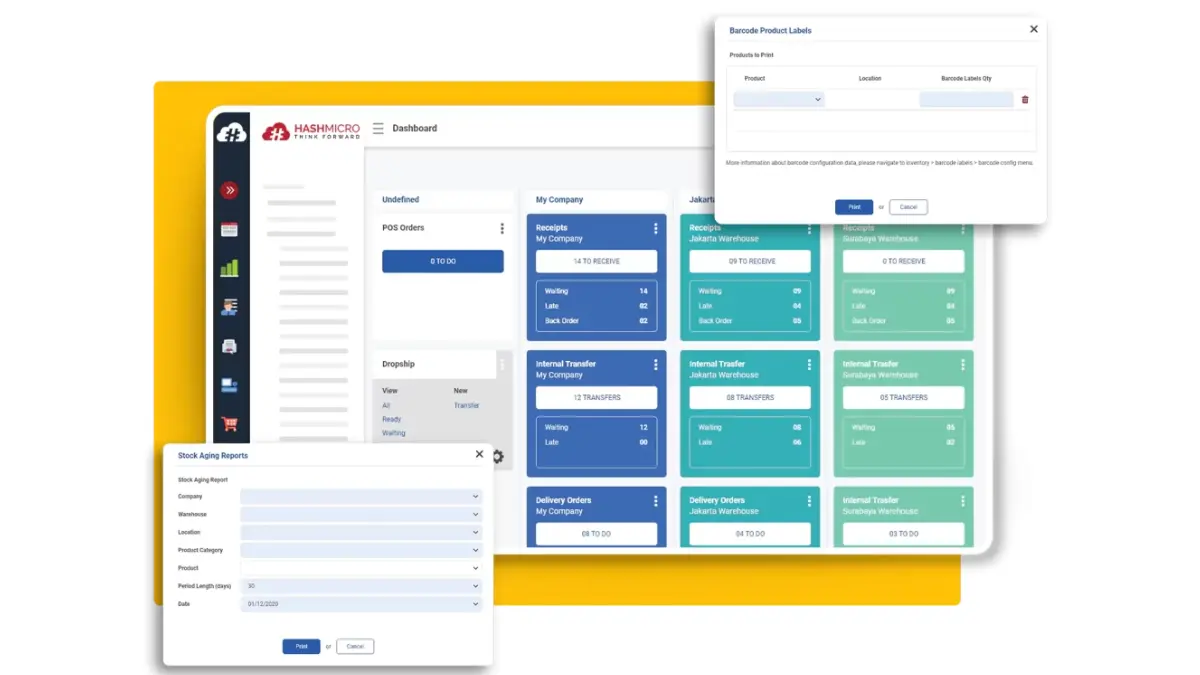You have your stock lined up and your sales forecasts ready, but suddenly, a trending product starts flying off the shelves faster than you anticipated. Caught off-guard, you’re left with empty shelves and a long list of orders you can’t fill. This situation underscores the critical importance of maintaining a buffer stock.
This issue is compounded when you lack an effective inventory management system. Without such a system, recognizing stock depletion becomes delayed and replenishing supplies becomes sluggish.
This lack of efficient monitoring and management exacerbates supply chain disruptions, leading to prolonged periods of stockouts that strain customer relationships and disrupt your operations even further. Read on to discover how you can manage buffer stock better!
Key Takeaways
|
Table of Contents

Buffer Stock Definition
Buffer stock, or reserve inventory, is an essential business management tool. It’s used to maintain a sufficient supply of products, especially during unexpected demand or supply interruptions. With this, companies can ensure their operations continue smoothly without worrying about short-term market fluctuations.
This strategic reserve allows businesses to meet customer orders on time, enhancing customer satisfaction and maintaining a steady flow of income, even during supply chain disruptions. It is a cushion that prevents operational hiccups and helps maintain consistent service levels.
The Importance of Buffer Stock
Buffer stocks are essential for stabilizing supply chains, especially in industries like seasonal products where demand fluctuates unpredictably. Without a strong inventory system, businesses face the real risk of running out of stock when it matters most.
This not only means lost sales but also gives customers a reason to turn to your competitors, potentially losing their loyalty permanently. Moreover, implementing Minimum Order Quantities (MOQ) can help maintain buffer stock levels effectively, ensuring readiness for demand spikes.
If reserves are too low, even minor supply chain disruptions can grind production to a halt, necessitating expensive rush orders and overwhelming your procurement team. These kinds of operational hiccups can quickly balloon into substantial financial losses and may erode trust with both suppliers and customers.
Geographical Considerations in Buffer Stock Management
To manage buffer stocks effectively, businesses should think about where their products are stored to optimize supply chain efficiency. For instance, if your business has multiple locations, you can place some stocks in central hubs that are easily accessible.
Integrating a periodic inventory system allows for regular checks and better control over buffer stocks across multiple locations. This ensures products are placed in central hubs that are easily accessible.
This allows you to quickly move products to areas experiencing high demand without long shipping times or delays, keeping your operations running smoothly. Another practical approach is placing buffer stocks near key markets or distribution centers.
By doing this, you reduce the risk of delays caused by transportation issues or border checks. This strategy not only helps you respond faster to sudden demand surges but also saves on shipping costs, ensuring that your customers always have what they need, when they need it.
Using Historical Data to Determine Buffer Levels
Using historical data helps businesses accurately determine buffer stock levels by analyzing past sales patterns and demand trends. This ensures that companies can anticipate seasonal spikes and slow periods, allowing them to adjust their inventory accordingly.
Incorporating inventory management software makes this process even more efficient. The software automates data collection and analysis, providing real-time insights on sales. It helps businesses track supplier performance and dynamically adjust buffer levels. This combination of data and automation saves time and improves decision-making.
Buffer Stock vs. Safety Stock
Safety stocks and buffer stocks often confuse people, but they serve very different purposes in inventory management. You can use buffer stock to handle unexpected fluctuations in demand or supply, while safety stock protects against worst-case stock-out scenarios.
Buffer stock adjusts more frequently to reflect current demand trends and supply conditions. Safety stock, however, is calculated based on maximum demand and lead time, ensuring enough inventory during delays.
Understanding these differences is crucial for keeping operations smooth and avoiding costly disruptions. By managing both types effectively, businesses can maintain better control over their inventory.
HashMicro’s Inventory Management System to Automate Buffer Stock Calculation
HashMicro’s Inventory Management System provides an advanced solution for automating buffer stock calculations. Businesses can rely on its cutting-edge features to accurately manage stock levels without the need for constant manual oversight.
Features of HashMicro’s Inventory Management System:
- Fast Moving Slow Moving Stocks Analysis – This feature helps you analyze product movement trends, allowing for more accurate stock planning.
- Stock Forecasting – Predicts future stock requirements based on historical data, ensuring your stock levels are always optimized.
- Run Rate Reordering Rules – Automatically reorders products based on consumption rates, ensuring timely replenishment of buffer stock.
- Product Expiry Management – Tracks the expiry of perishable products, ensuring that buffer stock is efficiently rotated.
- Stock Reservations & Reporting – Provides comprehensive reporting and allows for reservations of stock, ensuring that critical products are always available.
With these features, HashMicro’s Inventory Management System automates buffer stock calculations, reduces stock shortages, and streamlines operations. With many inventory software options out there, we know choosing can be tough—try our software for free here and see the difference!
Conclusion
Effective buffer stock management ensures smooth operations and meets fluctuating demand. Poor stock management can result in stockouts and frustrated customers. By implementing a strategic buffer stock system, businesses can maintain steady supply levels and ensure customers receive their products on time.
To make this process even easier, automating buffer stock calculations with a robust inventory management system, like HashMicro’s, can significantly improve efficiency. Our system streamlines stock monitoring, forecasting, and reordering, allowing you to stay ahead of potential stock issues. Try our free demo and automate every inventory management today!
Frequently Asked Questions
-
What is an example of a buffer inventory?
A buffer inventory stores extra raw materials to handle potential supply chain delays. It helps businesses meet demand despite unexpected disruptions.
-
What is a buffer stock in a level business?
In a level business, buffer stock maintains consistent production during demand changes. It ensures steady output and prevents operational slowdowns.
-
How to use stock buffers?
Businesses use stock buffers to handle unpredictable demand or supply chain issues by storing extra inventory. This ensures they fulfill orders without interruptions or delays

























